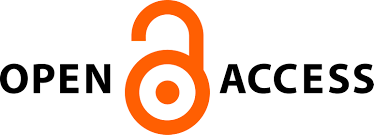University Presentation to Potential Students Using Web 2.0 Environments
##plugins.themes.bootstrap3.article.main##
Abstract
Choosing what to study for school graduates is a compound and multi-stage process (Chapman, 1981; Hossler et al., 1999; Brennan, 2001; Shankle, 2009). In the information retrieval stage, future students have to gather and assimilate actual information, form a list of possible higher education institutions. Nowadays modern internet technologies enable universities to create conditions for attractive and interactive information retrieval. Userfriendliness and accessibility of Web 2.0-based environments attract more young people to search for information in the web. Western universities have noticed a great potential of Web 2.0 in information dissemination back in 2007. Meanwhile, Lithuanian universities began using Web 2.0 to assemble virtual communities only in 2010 (Valinevičienė, 2010).
Purpose—to disclose possibilities to present universities to school graduates in Web 2.0 environments.
Design/methodology/approach—strategies of a case study by using methods of scientific literature analysis, observation and quantitative content analysis.
Findings—referring to the information retrieval types and particularity of information retrieval by school graduates disclosed in the analysis of scientific literature, it has been identified that 76 per cent of Lithuanian universities apply at least one website created on the basis of Web 2.0 technology for their official presentation. The variety of Web 2.0 being used distributes only from 1 to 6 different tools, while in scientific literature more possibilities to apply Web 2.0 environments can be found.
Research limitations/implications—the empiric part of the case study has been contextualized for Lithuania; however, the theoretic construct of possibilities to present universities in Web 2.0 environments can be used for the analysis presentation of foreign universities in Web 2.0 environments.
Practical implications—the work can become the recommendation to develop possibilities for Lithuanian universities to be presented in Web 2.0 environments.
Originality/Value—possibilities to apply Web 2.0 environments at schools and universities have been analysed in different aspects of the application (administration of students’ or pupils’ activity, communication, collaboration, learning); there are the studies of Web 2.0 environments aimed to manage career of specialists. Meanwhile in the aspect of study choice process the possibilities of presenting universities in Web 2.0 environments have not been analysed.
Research type: case study.
Purpose—to disclose possibilities to present universities to school graduates in Web 2.0 environments.
Design/methodology/approach—strategies of a case study by using methods of scientific literature analysis, observation and quantitative content analysis.
Findings—referring to the information retrieval types and particularity of information retrieval by school graduates disclosed in the analysis of scientific literature, it has been identified that 76 per cent of Lithuanian universities apply at least one website created on the basis of Web 2.0 technology for their official presentation. The variety of Web 2.0 being used distributes only from 1 to 6 different tools, while in scientific literature more possibilities to apply Web 2.0 environments can be found.
Research limitations/implications—the empiric part of the case study has been contextualized for Lithuania; however, the theoretic construct of possibilities to present universities in Web 2.0 environments can be used for the analysis presentation of foreign universities in Web 2.0 environments.
Practical implications—the work can become the recommendation to develop possibilities for Lithuanian universities to be presented in Web 2.0 environments.
Originality/Value—possibilities to apply Web 2.0 environments at schools and universities have been analysed in different aspects of the application (administration of students’ or pupils’ activity, communication, collaboration, learning); there are the studies of Web 2.0 environments aimed to manage career of specialists. Meanwhile in the aspect of study choice process the possibilities of presenting universities in Web 2.0 environments have not been analysed.
Research type: case study.
##plugins.themes.bootstrap3.article.details##
Section
Articles
- The Author grants to the Publisher the exclusive right and licence to publish this Article without remuneration until the expiry of the economic rights: to reproduce the article in print and digital form, including its publication; to disseminate the original version of the Article or its copies in Lithuania and foreign countries; to translate the Article; to publish the article, including making it publicly available via computer networks; to reproduce and publish the Article in Lithuanian and foreign databases; to licence usage of the Article in ways described in this paragraph.
- The Author warrants that the economic rights of the Author have not been assigned or granted to third parties, that the Article has not been published so far and is not under consideration of being published elsewhere.
- The Author warrants that the Article does not violate intellectual property rights of others.
- After the Article is published in Social Technologies the Author shall have a right to make it public on personal website or on a website of an institution of affiliation, to reproduce it for non-commercial teaching or scholarly research purposes, clearly indicating that the primary source of its publication is Social Technologies.
- This consent shall be considered invalid if the Editorial Board of the Social Technologies decides not to publish the Article.
Authors contributing to Social Technologies agree to publish their articles under a Creative Commons Attribution 3.0 Unported (CC BY 3.0) Licence, allowing third parties to share their work (copy, distribute, transmit) and to adapt it, under the condition that the authors are given credit, and that in the event of reuse or distribution, the terms of this licence are made clear.







